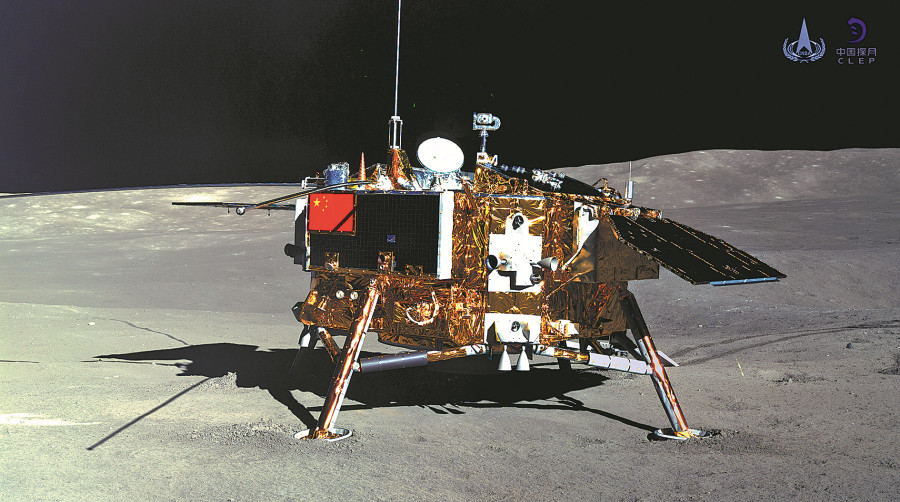Lunar mission due by end of this year
By ZHAO LEI | CHINA DAILY | Updated: 2020-09-22 07:04

Chang'e 5, the next mission in China's lunar exploration program, will demonstrate and test the country's technological and engineering capabilities in space, according to a key figure in the project.
Yu Dengyun, deputy chief designer of China's lunar exploration program, said on Sunday that Chang'e 5 will be launched by a Long March 5 heavy-lift carrier rocket at the Wenchang Space Launch Center in Hainan province by the end of 2020.
The 8.2-metric-ton robotic probe has four components-an orbiter, lander, ascender and re-entry module. After the probe reaches lunar orbit, the components will separate into two parts, with the orbiter and re-entry module remaining in orbit while the lander and ascender descend to the lunar surface.
The lander and ascender will make a soft landing and then get to work on tasks such as using a drill to collect underground rocks and a mechanical arm to gather lunar soil.
After the surface operations are completed, the ascender's rocket will lift it to lunar orbit to dock with the re-entry module. It will transfer lunar samples to the module, which will carry them back to Earth.
Considering these highly sophisticated operations, Chang'e 5 will be more difficult and challenging than previous Chinese lunar expeditions, Yu said.
"First of all, its most important task will be collecting lunar samples. The environment on the lunar surface, like the gravity there, is very different from that on Earth. So we must ensure that our technologies are functional and reliable during the collection and packing processes," the designer explained.
"The next challenge will be lifting the sample-carrying ascender from the moon. All of our launches so far were made from Earth, but the coming launch will take place on lunar soil and use the Chang'e 5's lander as the launchpad. Consequently, the challenge will be whether our equipment can handle the complicated operation as it was designed to do."
After the capsule is sent into orbit, it will approach the re-entry module and dock with the latter, he said.
"Previous rendezvous and docking by our spaceships occurred in low-Earth orbit, but this time it will take place in a lunar orbit," Yu said.
The designer said the last challenge will emerge during the re-entry process as the re-entry capsule will descend through Earth's atmosphere at a speed of 11.2 kilometers per second, much faster than previous Chinese spacecraft's re-entry speeds.
"The ultrafast speed will verify the aerodynamic design, heat-resistant materials and flight control system on our probe," he noted.
If the Chang'e 5 mission is successful, it will make China the third nation in the world to bring lunar samples back after the United States and the Soviet Union, and will also make Chang'e 5 the world's first lunar sample-return mission in more than four decades.
Following Chang'e 5, China has made plans for Chang'e 6, 7 and 8 missions. Chang'e 6 is expected to land on the moon's south pole and bring rocks and soil back, while Chang'e 7 is set to conduct a thorough investigation of the lunar south pole. Chang'e 8 will be tasked with verifying cutting-edge technologies that may be applied in mankind's future lunar expeditions including a possible scientific outpost, according to the China National Space Administration.
























